Weekly Current Affairs (1st September 2025 to 7th September 2025) | Weekly Current Affairs - UPSC PDF Download
GS3/Environment
Noise Pollution is Rising but Policy is Falling Silent
Why in News?
Urban noise pollution has become an increasingly significant public health and environmental issue in India, affecting the quality of life in cities where sound levels frequently exceed permissible limits. This situation poses serious threats to sensitive areas such as schools and hospitals, contradicting constitutional promises of peace and dignity.
Key Takeaways
- Urban noise pollution levels exceed safe limits, particularly in sensitive zones.
- Existing monitoring systems lack accountability and fail to inform governance.
- Legal frameworks are in place, but enforcement is inadequate.
- The ecological impacts of noise pollution threaten biodiversity and public health.
- There is a need for comprehensive reforms to address noise pollution effectively.
Additional Details
- Monitoring Without Accountability: The Central Pollution Control Board (CPCB) established the National Ambient Noise Monitoring Network (NANMN) in 2011, but it remains largely ineffective as a governance tool. Sensor misplacement and insufficient enforcement undermine its potential.
- Constitutional and Legal Neglect: Despite the constitutional guarantee of the right to life with dignity under Article 21, noise pollution often exceeds World Health Organization (WHO) safe levels, particularly in designated silence zones.
- Ecological Consequences: Studies indicate that noise pollution disrupts avian communication, posing broader ecological risks that could alter species interactions and reduce urban biodiversity.
- Civic Fatigue and the Politics of Silence: Noise pollution is often normalized, leading to public apathy and a lack of coordinated response among municipal authorities.
- Pathways to Reform: Proposed reforms include decentralizing noise monitoring, linking data to enforcement actions, and integrating noise management into urban planning.
In conclusion, the crisis of urban noise pollution in India highlights failures in governance and cultural awareness. Addressing this issue requires a comprehensive approach that fosters civic education and integrates noise management into urban planning. Without a rights-based framework, urban environments may remain burdensome in terms of noise, undermining public health and dignity.
GS3/Environment
Data Shows Seas Rising Faster Around Maldives, Lakshadweep Than Believed
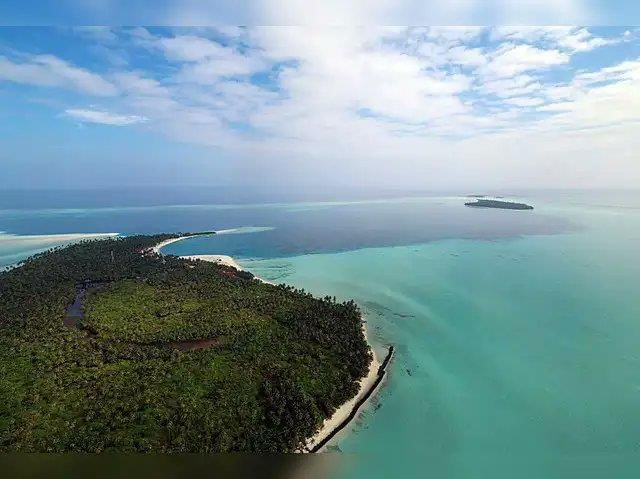 Why in News?
Why in News?
The issue of rising sea levels has gained significant attention due to its severe implications for ecosystems, economies, and human settlements, particularly for vulnerable island nations such as the Maldives and Lakshadweep. Recent research using coral microatolls indicates that sea levels in the Indian Ocean began rising rapidly as early as the 1950s, challenging previous assumptions based on satellite and tide-gauge data.
Key Takeaways
- Coral microatolls provide a natural record of sea-level changes.
- Sea-level rise in the Indian Ocean has been accelerating since the late 1950s.
- Vulnerable island nations face significant risks due to rising sea levels.
Additional Details
- Coral Microatolls: These are disk-shaped colonies of coral that stop growing upwards when they reach the lowest tide level, providing a natural record of sea-level changes over time. Research conducted at the Mahutigalaa reef in the Huvadhoo Atoll of the Maldives measured a Porites microatoll from 1930 to 2019, revealing a significant rise.
- Accelerated Sea-Level Rise:Data indicates a rise of 0.3 meters over the past 90 years, with varying rates of increase:
- 1930-1959: 1-1.84 mm/year
- 1960-1992: 2.76-4.12 mm/year
- 1990-2019: 3.91-4.87 mm/year
- Climate Variability: The growth patterns of corals were affected by climatic events such as El Niño and the Indian Ocean Dipole, highlighting the influence of climate variability on marine ecosystems.
- Regional Significance: The Indian Ocean is warming at a rate higher than the global average, which contributes to accelerated sea-level rise and highlights the need for better monitoring in this region.
- Adaptation Strategies: The findings stress the importance of understanding the timing and magnitude of sea-level rise for effective coastal planning and disaster preparedness.
The revelation that sea-level rise in the Maldives and Lakshadweep began decades earlier than previously thought serves as a crucial alert for policymakers and local communities. As the Indian Ocean continues to warm, proactive measures and international cooperation will be essential for the survival of low-lying nations facing existential threats.
GS2/Polity
Foreigners Tribunal (FT) Can Issue Arrest Warrants
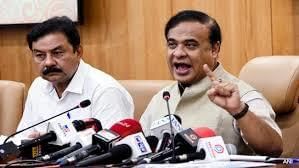 Why in News?
Why in News?
The Union Home Ministry has empowered Foreigners Tribunals (FTs), particularly in Assam, to detain suspected illegal immigrants in designated camps. This authority was previously exercised only through executive orders.
Key Takeaways
- Foreigners Tribunals are quasi-judicial bodies established under the Foreigners (Tribunal) Order, 1964.
- They determine whether an individual is a foreigner or illegal immigrant, particularly regarding border migration issues in Assam.
- About 100 FTs are currently operational in Assam, following the expansion after the NRC-2019.
- New provisions under the Immigration and Foreigners Act, 2025, grant FTs the authority to issue arrest warrants and detain individuals.
Additional Details
- Nature: FTs are established to adjudicate cases involving suspected foreigners, primarily focusing on references from border police and cases of "D" (doubtful) voters flagged by the Election Commission.
- Composition: Each tribunal consists of a maximum of three members, which may include retired judges, advocates, and civil servants with judicial experience.
- Functioning: FTs have the powers of a civil court, including the ability to summon witnesses and examine evidence, with a requirement to resolve cases within 60 days.
- Judicial Authority: Under the new provisions, FTs can now issue arrest warrants, order detentions, and require personal appearances.
- Restrictions on Employment: Foreigners are barred from working in strategic sectors without approval from the Central government.
- Exemptions: Citizens of Nepal, Bhutan, Tibetans, and Sri Lankan Tamils are exempted under a special order issued in 2025.
The new regulations signify a significant shift in the legal framework governing the detention and deportation of illegal immigrants in India, particularly in Assam, where migration issues have been a longstanding concern.
GS3/ Environment
Biodiversity Beyond National Jurisdiction (BBNJ) Agreement
Why in News?
The Ministry of Earth Sciences has formed a 12-member committee to enforce a new law aimed at protecting India's interests in international ocean waters. This initiative is in line with the Biodiversity Beyond National Jurisdiction (BBNJ) Agreement, also known as the High Seas Treaty.
What is the Biodiversity Beyond National Jurisdiction (BBNJ) Agreement?
- About: The BBNJ Agreement, commonly referred to as the High Seas Treaty, is a legal framework established under the United Nations Convention on the Law of the Sea (UNCLOS) to protect the ecological health of the oceans. Adopted in 2023, the treaty aims to reduce pollution, conserve biodiversity, and ensure the sustainable use of marine resources in waters beyond national jurisdictions.
- Scope of the Treaty: The BBNJ Agreement encompasses several key areas:
- Establishing Marine Protected Areas (MPAs): The treaty provides for the creation of MPAs, akin to national parks and wildlife sanctuaries, to regulate activities and conserve ocean ecosystems.
- Regulating Extractive Activities: The treaty regulates extractive activities such as seabed mining and ensures the fair distribution of benefits derived from marine resources and organisms.
- Mandatory Environmental Impact Assessments (EIAs): The treaty mandates EIAs for major oceanic projects that could potentially harm the high seas, even if such projects are carried out within national waters.
- Supporting Developing Nations: The treaty aims to assist developing nations in accessing marine technologies and resources while ensuring the conservation of marine ecosystems.
- Signing and Ratification: As of August 2025, over 140 countries have signed the BBNJ Agreement, with 55 countries having ratified it. India signed the BBNJ Agreement in 2024 but has not yet ratified it. Signing the treaty indicates a country's intent to comply, while ratification legally binds the country to the treaty's provisions. The process of ratification varies from one country to another.
High Seas
- About: High seas refer to the areas of the ocean that lie beyond the jurisdiction of any single country. Typically, national jurisdictions extend up to 200 nautical miles (approximately 370 kilometers) from a country's coastline, an area known as the Exclusive Economic Zone (EEZ). Within the EEZ, a country has special rights to explore and exploit marine resources. However, beyond this zone, no country has jurisdiction or responsibility for resource management.
- Protection Status: Currently, only about 1% of the high seas are protected under conservation measures.
- Significance: The high seas are of immense importance as they cover 64% of the world's oceans and account for 50% of the Earth's surface. They play a crucial role in marine biodiversity, climate regulation, carbon absorption, solar energy storage, and heat distribution. Additionally, the high seas are a source of vital resources, including seafood, raw materials, genetic resources, and medicinal compounds.
United Nations Convention on the Law of the Sea (UNCLOS)
- UNCLOS, commonly referred to as the Law of the Sea, is an international treaty that was adopted and signed in 1982, replacing the earlier 1958 Geneva Conventions.
- The treaty provides the legal framework for various marine and maritime activities and divides ocean space into five distinct zones: Internal Waters, Territorial Sea, Contiguous Zone, Exclusive Economic Zone (EEZ), and High Seas.
GS1/ Geography
Total Lunar Eclipse and ‘Blood Moon’

Why is it News?
A total lunar eclipse is anticipated on the night of September 7, 2025. During this event, the moon will be entirely covered by the Earth's shadow, resulting in a copper red hue, commonly known as a Blood Moon.
Total Lunar Eclipse
A total lunar eclipse takes place when the Moon moves fully into the Earth's umbra, the darkest part of its shadow. This phenomenon occurs when the Earth, Sun, and Moon are perfectly aligned, blocking direct sunlight from reaching the Moon.
Blood Moon
- A Blood Moon refers to the reddish or coppery appearance of the Moon during a total lunar eclipse. This striking color occurs due to the way sunlight is filtered and refracted through Earth's atmosphere.
- During a total lunar eclipse, which happens two to three times a year, the Earth blocks direct sunlight from reaching the Moon. However, sunlight can still reach the Moon by passing through Earth's atmosphere.
- As sunlight passes through the atmosphere, it is bent (a process called refraction) and scattered. The shorter blue wavelengths of light are scattered away, while the longer red and orange wavelengths pass through and fall on the Moon's surface.
- This scattering effect is why the Moon takes on a deep red or reddish-orange color during a total lunar eclipse, creating the stunning visual known as a Blood Moon.
GS1/History & Culture
Sankaradeva’s Vrindavani Vastra to be displayed in Assam
Why in News?
Assam is set to showcase the 16th-century Vrindavani Vastra in 2027, under an 18-month lease from the British Museum, secured by a sovereign guarantee.
Key Takeaways
- The Vrindavani Vastra is a significant cultural artifact from the 16th century.
- It was woven under the guidance of Srimanta Sankaradeva in Assam.
- The original piece is lost, but fragments are preserved in various museums.
- Plans are underway to bring it to Assam temporarily.
Additional Details
- Origin: The Vrindavani Vastra is a silk tapestry created in the 16th century in Taniguchi (Barpeta), Assam, under Srimanta Sankaradeva's guidance.
- Commission: This tapestry was commissioned by Cilarai, the brother of Koch king Naranarayana.
- Design & Content: It depicts various scenes from Krishna's childhood and Vrindavan leelas, including his birth, adventures, and the defeat of Kamsa, featuring multicolored silk with loom-embroidered captions.
- Current Status: The original piece is lost, but fragments are preserved in the British Museum, Victoria & Albert Museum (London), and Guimet Museum (Paris).
Who was Srimanta Sankaradeva (1449–1568)?
Srimanta Sankaradeva was an Assamese Vaishnavite saint, scholar, cultural reformer, and polymath.
- Religious Contribution: He founded the Ekasarana Dharma, a monotheistic Bhakti movement centered on Lord Krishna, rejecting idol worship, caste divisions, and Brahmanical orthodoxy.
- Motto: "Eka Deva, Eka Seva, Eka Biney Nahi Kewa" (One God, One Service, None Else).
- Influence: His teachings significantly influenced the Koch and Ahom kingdoms.
Cultural Contribution
- Founded Borgeet (devotional songs).
- Created Ankia Naat and Bhaona (religious theatre).
- Promoted the Sattriya dance, recognized as a classical dance of India.
- Developed Brajavali, a literary language.
Social Reform
- Considered the father of modern Assamese identity.
- Promoted equality, fraternity, and community cohesion.
- Ended regressive practices, such as human sacrifice.
Legacy
Srimanta Sankaradeva's legacy lies in his ability to combine art, devotion, and social reform, creating a unified cultural renaissance and being revered as one of Assam's greatest spiritual and cultural icons.
UPSC 2014
With reference to the famous Sattriya dance, consider the following statements:
- 1. Sattriya is a combination of music, dance, and drama.
- 2. It is a centuries-old living tradition of Vaishnavites of Assam.
- 3. It is based on classical Ragas and Talas of devotional songs composed by Tulsidas, Kabir, and Mirabai.
Which of the statements given above is/are correct?
- Options: (a) 1 only (b) 1 and 2 only* (c) 2 and 3 only (d) 1, 2 and 3 only
GS2/Governance
NGO ‘Educate Girls’ Wins Ramon Magsaysay Award 2025
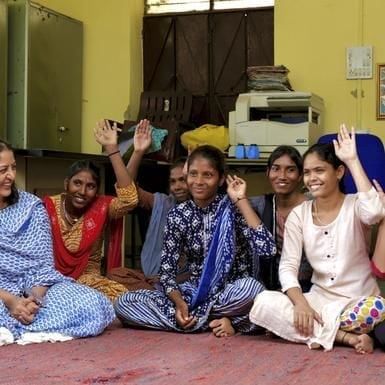 Why in News?
Why in News?
The Ramon Magsaysay Award for the year 2025 has been awarded to Educate Girls, an Indian NGO dedicated to promoting girls’ education in rural and underprivileged areas. This recognition highlights the significant impact of the organization in addressing educational challenges faced by girls in these regions.
Key Takeaways
- Educate Girls is the first Indian organization to receive the Ramon Magsaysay Award since its inception in 1958.
- Other notable recipients of the 2025 award include Shaahina Ali from Maldives, an environmental activist, and Fr. Flaviano Antonio L. Villanueva from the Philippines, a human rights defender.
Additional Details
- About Educate Girls: Originally founded as the Foundation to Educate Girls Globally, it is led by CEO Gayatri Nair Lobo. The organization aims to tackle gender inequality in education and uplift rural communities through girls’ schooling.
- Impact: Educate Girls operates in some of India’s most remote regions and employs community workers known as preraks and team balikas to enhance enrollment and retention of girls in schools. The initiative has created a ripple effect where educating girls leads to family upliftment and community strengthening.
- Ramon Magsaysay Award Overview: Often referred to as the "Nobel Prize of Asia," this award has been presented annually since its establishment in 1958 to honor individuals and organizations demonstrating integrity in governance, service, and idealism in democracy.
- Notable Indian Recipients: Previous Indian recipients of the award include Vinoba Bhave, Mother Teresa, and Satyajit Ray, among others. Educate Girls joins this prestigious list as the first Indian NGO to be honored.
This recognition underscores the vital role of NGOs like Educate Girls in transforming education and promoting gender equality, reflecting the broader commitment to social justice and empowerment in society.
GS2/International Relations
Trump’s Tariff War as Opportunity for the Global South
Why in News?
The contemporary world order is experiencing significant disruptions due to the interplay of economics, geopolitics, and technology. While much attention has been directed towards the actions of the United States and President Donald Trump's policies, it is essential for nations like India to analyze these disturbances and develop a strategic response that addresses their implications.
Key Takeaways
- The global polycrisis necessitates a recalibration of India's national strategy to protect its interests.
- Trump's economic policies reflect a shift towards populist nationalism, impacting global trade dynamics.
- India must navigate its complex relationship with the U.S. while addressing its own economic challenges.
Additional Details
- Trump’s Motivations: Trump positions himself as a defender of a disenfranchised American majority, responding to feelings of betrayal by globalization.
- Economic Warfare: His administration utilizes tariffs as coercive tools to extract economic concessions from other nations, often at the expense of U.S. consumers.
- U.S. Strategy and India: The U.S. has shown a complicated stance towards India, often prioritizing its strategic interests over a straightforward partnership.
- India’s Compliance: India’s response has often been compliant rather than assertive, risking its own strategic autonomy in the process.
- Need for Reforms: To strengthen its position globally, India must address internal weaknesses, including manufacturing and investment stagnation.
In conclusion, the disruptions caused by Trump's policies are indicative of broader global fractures. India faces the dual challenge of resisting coercive U.S. measures while seizing the opportunity to advocate for a multipolar world that emphasizes economic fairness. Achieving this requires addressing its structural weaknesses and pursuing equitable growth strategies.
GS2/Polity
Free Movement Regime (FMR)
Why in News?
Recent developments ahead of Prime Minister Modi's visit to Manipur have led to the United Naga Council (UNC) announcing a trade embargo and the suspension of the Free Movement Regime (FMR) along the India–Myanmar border.
Key Takeaways
- The Free Movement Regime (FMR) was introduced in the 1970s, allowing residents within 16 km of the India–Myanmar border to travel freely across the border without a visa.
- The India–Myanmar border spans 1,643 km and runs through four states: Arunachal Pradesh, Nagaland, Manipur, and Mizoram.
- The FMR aims to acknowledge the ethnic, cultural, and familial ties of communities such as the Kuki, Naga, and Mizo living along the border.
- The regime was last revised in 2016 under the Act East Policy.
- On February 8, 2024, the Ministry of Home Affairs (MHA) announced the scrapping of the FMR due to security concerns.
Additional Details
- Suspension Reasons: The MHA cited several reasons for the suspension, including:
- Internal security risks.
- Concerns over illegal immigration and demographic changes in Northeastern states.
- Links to cross-border drug trafficking and insurgency.
- Stakeholder Perspectives: Various groups have differing views on the suspension:
- Kuki groups perceive the FMR's suspension and border fencing as an assault on their shared ethnic ties, likening it to the Berlin Wall, and have recently engaged in discussions with MHA negotiators.
- Naga groups (UNC) oppose the border fencing and FMR suspension, arguing it undermines their homeland, land rights, and identity, and have called for protests.
- The Meiteis (the Valley population) support the suspension, claiming it has facilitated illegal migration and aggravated ethnic tensions.
- The Government of India defends the suspension based on security and demographic concerns while trying to maintain peace talks with tribal groups.
In summary, the Free Movement Regime has been a significant aspect of border dynamics between India and Myanmar, facilitating travel and cultural exchange. However, recent security concerns have prompted its suspension, leading to varied reactions from different community stakeholders.
UPSC 2016 Question: Consider the following statements:
- I. Assam shares a border with Bhutan and Bangladesh.
- II. West Bengal shares a border with Bhutan and Nepal.
- III. Mizoram shares a border with Bangladesh and Myanmar.
Which of the statements given above are correct?
- Options: (a) I, II and III
- (b) I and II only
- (c) II and III only
- (d) I and III only
GS1/Geography
Understanding River Dynamics: Why Some Rivers Remain Single While Others Split
Why in News?
The research conducted by scientists at the University of California, Santa Barbara (UCSB) has shed light on the long-standing question of why certain rivers flow as single channels while others develop into braided systems. This study, which analyzed 84 rivers over a span of 36 years using satellite data, reveals critical insights into river behavior and its implications for flood management and ecological conservation, especially in the face of climate change.
Key Takeaways
- The study indicates that erosion, rather than equilibrium, is the primary factor driving rivers to split into multiple channels.
- Understanding the dynamics of single-thread versus multi-thread rivers is crucial for effective flood prediction and ecosystem management.
Additional Details
- Single-thread rivers: These rivers maintain a balance between bank erosion and sediment deposition, resulting in a stable width.
- Multi-thread rivers: Characterized by an imbalance where erosion outpaces deposition, causing channels to widen and frequently split, as seen in the Brahmaputra River, which erodes laterally at a rapid rate.
- Scientific Methodology: The study utilized Particle Image Velocimetry (PIV) to analyze satellite images, resulting in over 400,000 measurements of erosion and accretion across various climates.
- Ecological Insights: Recent findings suggest that vegetation plays a significant role in river morphology, impacting how bends in rivers migrate and evolve.
In conclusion, the findings from UCSB's research present a transformative understanding of why rivers split and the implications on flood management, river restoration, and ecological conservation. Particularly in India, where major rivers like the Ganga and Brahmaputra face challenges from human interventions, adopting natural solutions could lead to more sustainable water governance amidst climate change.
GS2/International Relations
India’s Strategic Autonomy in a Multipolar World
Why in News?
The discussion surrounding India's strategic autonomy has gained prominence as the country navigates its foreign policy in an increasingly multipolar world, particularly in the context of its relations with major powers like the United States, China, and Russia. This relevance is underscored by ongoing territorial disputes in regions like the South China Sea and the evolving geopolitical landscape.
Key Takeaways
- India's stance in the South China Sea emphasizes strategic autonomy by advocating for freedom of navigation under UNCLOS.
- Bilateral tensions with China include border clashes and disputes over oil exploration in contested waters.
- India employs a balanced approach through alliances like the Quad while engaging in cooperation via BRICS and SCO.
Additional Details
- Historical Context: India's strategic autonomy emerged from its colonial past and was institutionalized during Nehru's Non-Alignment Movement.
- Evolution of Strategic Autonomy: The concept has shifted from non-alignment to a doctrine of multi-alignment, showcasing India's adaptability in a changing global order.
- India and the United States: The partnership has deepened through defense cooperation and joint initiatives like the Quad, though friction points remain regarding trade and ties with Russia.
- Relations with China: Despite security challenges, China remains a key trading partner, prompting India to strengthen its border security and deepen Indo-Pacific ties.
- Engagement with Russia: India maintains a historical defense relationship with Russia, continuing cooperation despite international pressures.
- Global South Context: India has asserted its role as a voice for the Global South, balancing its relationships while emphasizing pragmatism.
- Technological Dimensions: India faces internal constraints such as political polarization and economic vulnerabilities, necessitating a focus on modern domains like cyber security and data sovereignty.
In conclusion, India's strategic autonomy is characterized by its ability to maintain independence in foreign policy, navigating the complexities of global alliances while safeguarding national interests. The evolution of this doctrine reflects India's resilience and adaptability in a multipolar world.
GS2/Polity
India Needs More Women Judges in the Supreme Court
Why in News?
The Supreme Court of India, as the highest judicial authority in the country, is tasked with not only interpreting constitutional provisions but also embodying the principles of equality and inclusion as outlined in the Constitution. However, there is a significant underrepresentation of women in this institution. The recent retirement of Justice Sudhanshu Dhulia in August 2025 and the subsequent appointments of Justices Vipul Pancholi and Alok Aradhe, without appointing a woman, have spotlighted the ongoing gender imbalance in the Court. Presently, Justice B.V. Nagarathna is the only woman among a full complement of 34 judges, raising critical questions about the criteria and processes utilized for judicial appointments.
Key Takeaways
- The Supreme Court has appointed only eleven women judges since its establishment in 1950, representing approximately 3.8% of the total 287 judges.
- Justice Fathima Beevi's appointment in 1989 marked a significant milestone, but progress has been slow since then.
- No woman judge has been appointed from Scheduled Castes or Scheduled Tribes, and only one has represented a religious minority.
Additional Details
- Historical Trends: The appointment of three women judges in August 2021 briefly increased women's representation above 10%, but this momentum was not sustained.
- Women judges tend to be appointed at a later age, limiting their tenure and ability to gain seniority.
- Structural barriers exist that hinder women's advancement within the judiciary, perpetuating a cycle of underrepresentation.
- Collegium System: The lack of transparency in the Collegium system has been criticized, as gender is not consistently considered in the selection process.
- The absence of women in leadership roles within the judiciary limits diverse perspectives in judicial decision-making.
In conclusion, the examination of women's representation in the Supreme Court of India reveals significant structural and procedural gaps that perpetuate gender imbalance. This issue transcends fairness to women candidates; it touches upon the institutional legitimacy of the judiciary. A representative bench, inclusive of women from diverse backgrounds, would enhance public confidence in the judiciary and ensure a broader range of perspectives in judicial decision-making. Without systemic reforms to address these structural barriers, the Supreme Court’s commitment to gender equality risks remaining more rhetorical than real.
GS2/Polity
Appointment of Vice Chancellors by Governor
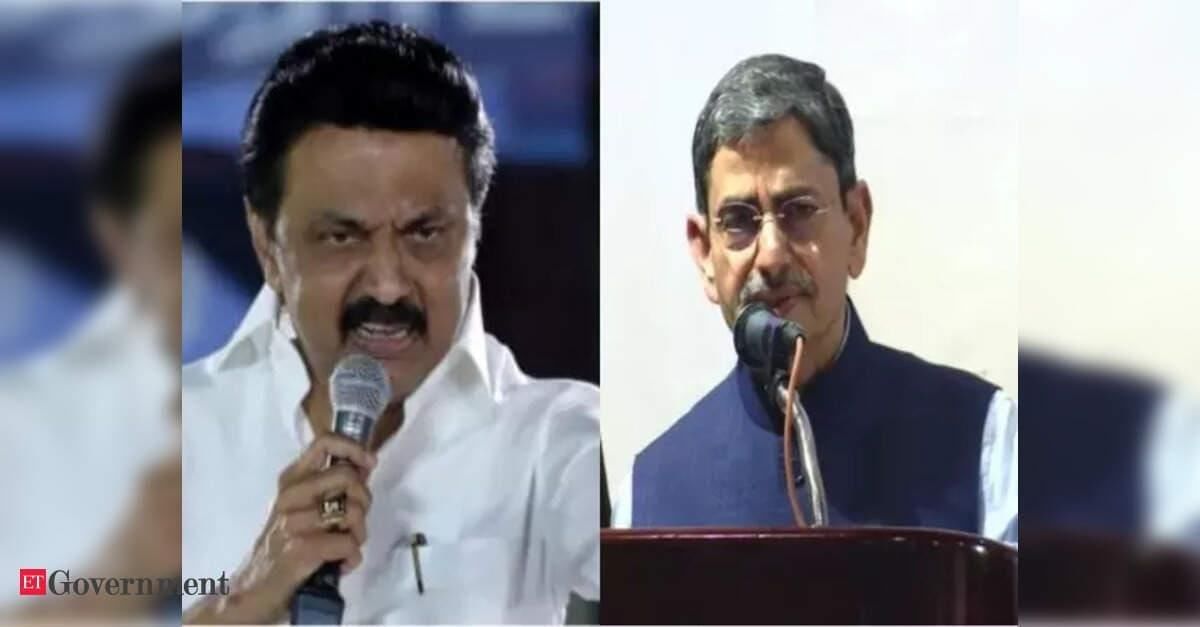 Why in News?
Why in News?
A recent controversy in Kerala has emerged regarding the appointment process for Vice-Chancellors (VCs) of state universities. The Governor, who serves as the ex-officio Chancellor, has requested the Supreme Court to exclude the Chief Minister from this selection process.
Key Takeaways
- The Vice-Chancellor serves as the Principal Academic and Executive Officer of the university.
- Vice-Chancellors are appointed following UGC Regulations, 2018, based on recommendations from a Search-cum-Selection Committee.
- Legal supremacy in conflicts between UGC regulations and state laws favors UGC norms under Article 254 of the Constitution.
About the Role of Governor and President in Universities
- State Universities: The Chancellor operates independently of the State Cabinet in matters concerning university governance.
- VC Appointment: The Chancellor appoints Vice-Chancellors from a panel put forth by a Search-cum-Selection Committee as per UGC Regulations.
- Legal Supremacy: In cases of conflict between UGC regulations and state laws, UGC norms take precedence under Article 254 of the Constitution.
- Central Universities: The President of India acts as the Visitor under the Central Universities Act, 2009, serving as a ceremonial head.
- The President selects Vice-Chancellors from a panel suggested by a Search Committee and can request a new panel if dissatisfied.
- Oversight Powers: The President is authorized to conduct inspections and inquiries into universities.
UPSC 2014 Question:
Which of the following are the discretionary powers given to the Governor of a State?
- 1. Sending a report to the President of India for imposing the President’s rule
- 2. Appointing the Ministers
- 3. Reserving certain bills passed by the State Legislature for consideration of the President of India
- 4. Making the rules to conduct the business of the State Government
Select the correct answer using the code given below:
- (a) 1 and 2 only
- (b) 1 and 3 only
- (c) 2, 3 and 4 only
- (d) 1, 2, 3 and 4
This discussion underscores the significant role of the Governor in the appointment of Vice-Chancellors and highlights the ongoing debates about governance in higher education in India.
GS2/International Relations
India-China: The Making of a Border
Why in News?
The India–China boundary, which extends approximately 3,488 km, is one of the longest disputed borders globally. This border, unlike clearly demarcated international frontiers, traverses the Himalayas and remains unsettled in significant areas. The primary disputes involve Aksai Chin in the western sector, claimed by India but occupied by China, and Arunachal Pradesh (especially the Tawang tract) in the eastern sector, claimed by China but controlled by India. The origins of this dispute are rooted in the legacies of the British and Manchu empires, as the boundary was never clearly defined. Following India’s independence, reliance on British-era maps clashed with China's historical and strategic claims, leading to the 1962 war and ongoing tensions between the two nations.
Key Takeaways
- The India-China border is one of the longest unresolved territorial disputes in the world.
- Key disputed areas include Aksai Chin, occupied by China, and Arunachal Pradesh, claimed by China but controlled by India.
- The border issue has historical roots in colonial legacies and has significant geopolitical implications.
Additional Details
- Colonial Inheritance: The boundary was imprecisely drawn during the British and Manchu empires, lacking clear settlement.
- Strategic Miscalculations: India's reliance on maps did not translate to effective control on the ground, allowing China to assert control over Aksai Chin.
- Conflict Emergence: China's construction of a highway through Aksai Chin and India’s occupation of Tawang based on the 1914 Simla Convention intensified disputes.
- In 1959, proposals for a Line of Actual Control (LAC) and territorial swaps were made by China, which India rejected, leading to the 1962 war.
The India-China border dispute illustrates a complex interplay of historical legacies, strategic interests, and national pride. Despite attempts at dialogue and normalization, such as Rajiv Gandhi's 1988 visit to Beijing, fundamental disagreements persist. The narrative highlights the need for strategic patience, military readiness, and diplomatic engagement to manage this complicated relationship effectively.
Historical Context and Policy Evolution
- Jawaharlal Nehru: His administration relied heavily on colonial maps and was dismissive of negotiations.
- Atal Bihari Vajpayee's Outreach: His 1979 visit to Beijing initiated cautious normalization of ties after a long period of mistrust.
- Rajiv Gandhi's Strategic Reset: His 1988 visit marked a shift to separate normalizing relations from resolving border issues.
Future Directions
- Institutional Strengthening: Empowering mechanisms like the Joint Working Group to enhance dialogue.
- Confidence-Building Measures: Expanding agreements on patrolling norms and communication to prevent clashes.
- Strategic Balance: Ensuring military preparedness while maintaining open diplomatic channels.
- Mutual Accommodation: Emphasizing a "fair and reasonable" settlement as envisioned by leaders like Deng Xiaoping and Rajiv Gandhi.
In conclusion, the ongoing India-China border dispute is a reflection of historical complexities and strategic challenges. Engaging in constructive dialogue and building trust through deeper cooperation in various sectors is essential for a peaceful resolution.
GS2/Polity
RTE Act and Minority Educational Institutions
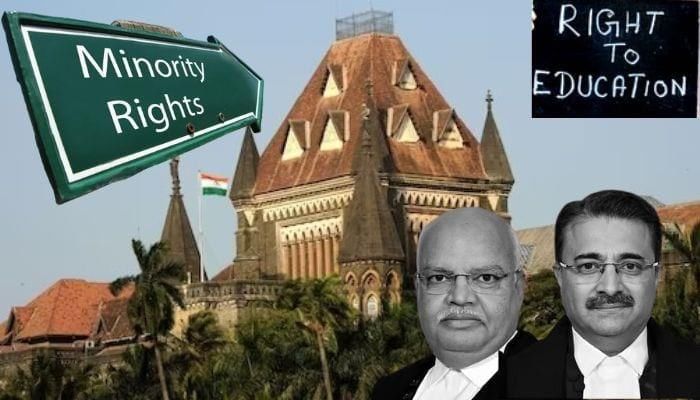 Why in News?
Why in News?
The Supreme Court has referred to a larger Bench the issue of whether Minority Educational Institutions (MEIs) are entirely exempt from the provisions of the Right to Education (RTE) Act, 2009.
Key Takeaways
- The Supreme Court's referral indicates a significant legal question regarding MEIs and the RTE Act.
- MEIs enjoy specific rights under the Constitution which may influence their obligations under the RTE Act.
Additional Details
- Constitutional Basis: Article 30(1) grants religious and linguistic minorities the right to establish and administer educational institutions of their choice, while Article 29 protects their cultural and educational rights.
- Legal Framework: The National Commission for Minority Educational Institutions (NCMEI) Act, 2004, governs disputes, recognition, and autonomy of MEIs.
- Recognized Minority Communities: The Government of India recognizes Muslims, Christians, Sikhs, Buddhists, Jains, and Zoroastrians (Parsis) as minorities.
- Judicial Principles: In the case of T.M.A. Pai Foundation vs. State of Karnataka (2002), the Supreme Court held that minority status is determined on a state-wise basis, allowing minority institutions to reserve seats for their community and maintain administrative control.
- Purpose and Role: MEIs aim to preserve cultural, linguistic, and religious heritage while providing quality education, protected from excessive state interference.
What is the Right to Education (RTE) Act, 2009?
- Genesis: The RTE Act originates from the Supreme Court's ruling in Unnikrishnan vs. State of Andhra Pradesh (1993), which declared education a Fundamental Right under Article 21. This was reinforced by the 86th Amendment Act (2002), which introduced Article 21A, mandating free and compulsory education for children aged 6-14 years.
- Enactment: The RTE Act was enacted to operationalize Article 21A, ensuring that all children have access to education.
- Key Provisions:
- Free and compulsory education for all children aged 6 to 14 in a neighborhood school.
- 25% reservation in private schools for children from disadvantaged backgrounds and weaker sections.
- No detention, expulsion, or board exams until Class VIII (with a 2019 amendment allowing states discretion).
- Teacher norms require a Teacher Eligibility Test (TET) qualification, and private tuition by teachers is banned.
- School Management Committees (SMCs) include parents, local authority representatives, and teachers to oversee school functioning.
- Curriculum and standards are developed by relevant academic authorities, often NCERT/SCERT.
- Amendments:
- 2012 amendments included provisions for children with disabilities and exempted minority/religious institutions from certain obligations.
- Abolished the uniform "no-detention policy," allowing states to make individual decisions.
In conclusion, the ongoing legal discussions regarding the RTE Act and MEIs highlight the balance between educational rights and the autonomy of minority institutions, reflecting the complexities of educational governance in India.
GS1/Geography
Deadly Earthquake in Afghanistan
Why in News?
A recent powerful earthquake in Afghanistan resulted in the tragic loss of at least 800 lives and left thousands injured, underscoring the country's severe vulnerability to seismic hazards.
Key Takeaways
- Afghanistan is located in a seismically active region due to its geological setting.
- The ongoing collision of tectonic plates contributes to frequent and severe earthquakes.
- Key earthquake-prone regions include the Hindu Kush, Sulaiman Range, and Main Pamir Thrust Zone.
Additional Details
- Geological Setting: Afghanistan is situated in the Hindu Kush mountains, part of the Alpide Belt, which is the second most seismically active area globally after the Circum-Pacific.
- Tectonic Origin: The region was formed by the closure of the Tethys Ocean, resulting from the collision of the African, Arabian, and Indian Plates with the Eurasian Plate.
- Ongoing Collision: The continuous movement of the Indian Plate into the Eurasian Plate results in the formation of mountain ranges like the Himalayas and Hindu Kush, leading to significant seismic activity.
- Seismic Characteristics: Afghanistan experiences both shallow-focus earthquakes (0–70 km depth) causing major destruction and rare deep-focus quakes (up to 200 km) unique to the Hindu Kush.
- Fault Structures: Major faults exist where the Indian and Eurasian Plates converge, making Afghanistan highly fractured and vulnerable to tremors.
Due to these geographic and tectonic factors, Afghanistan is considered one of the most earthquake-prone countries, facing repeated deadly events since the 1990s.
Consider the following statements:
- 1. In a seismograph, P waves are recorded earlier than S waves.
- 2. In P waves, individual particles vibrate to and fro in the direction of wave propagation, whereas in S waves, particles vibrate up and down at right angles to the direction of wave propagation.
Which of the statements given above is/are correct?
- Options: (a) 1 only (b) 2 only (c) Both 1 and 2 (d) Neither 1 nor 2
GS3/ Science and Technology
Bioproducts
Why in News?
- The Department of Biotechnology (DBT) in India is establishing 16 biomanufacturing hubs to enhance domestic production of bioproducts like Active Pharmaceutical Ingredients (APIs), biofuel enzymes, and reagents for biofertilizers.
- These hubs, known as National Bio-Enablers or Mulankur, aim to support indigenous production and foster innovation in various sectors, including health, agriculture, energy, and environment.
Bioproducts
- Definition: Bioproducts are derived from renewable biomass sources such as crops, trees, algae, and agricultural waste. They encompass a range of fuels, materials, and chemicals, including biofuels (like ethanol and biogas), bioplastics, bio-based cosmetics, and plant-derived medicines.
- Production Methods: Bioproducts are generated through various methods, including fermentation, pyrolysis, enzymatic conversion, and chemical synthesis. Common feedstocks include soybeans, sugarcane, algae, and mycelium, often utilizing agri-forestry residues to minimize stress on food crops. For example, sunflower residue can be converted into biofuel.
- Significance: Bioproducts play a crucial role in reducing dependence on fossil fuels and mitigating environmental issues such as air pollution, deforestation, and biodiversity loss. They promote climate-resilient development through biotechnological innovation and extend beyond laboratory settings to support sustainability through biodegradable packaging and eco-friendly products. Additionally, bioproducts contribute to rural employment generation and the creation of green jobs.
- Biodegradability: The biodegradability of bioproducts varies depending on their use. For instance, bio-based paints may not be biodegradable, while other bioproducts are designed to break down naturally.
GS3/Environment
Collapse of Atlantic Meridional Overturning Circulation (AMOC)
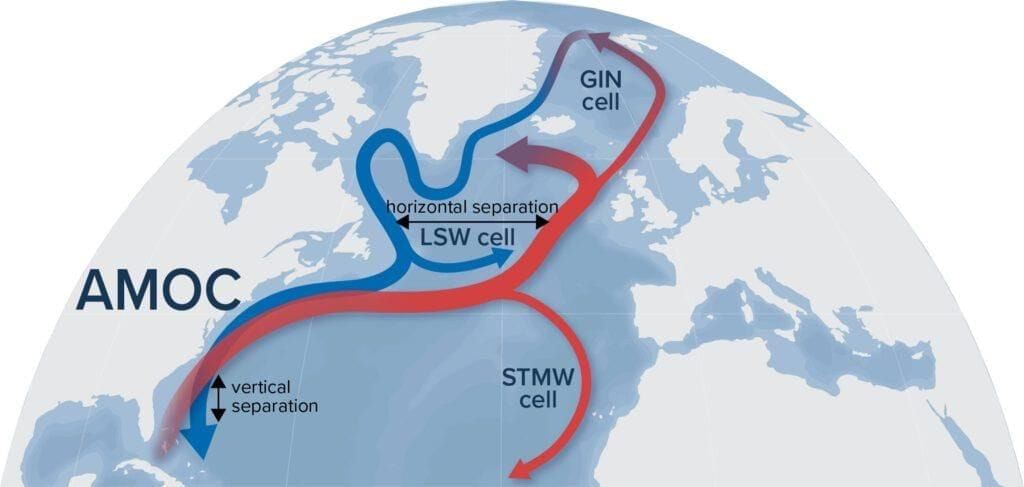 Why in News?
Why in News?
A recent study has indicated that the collapse of the Atlantic Meridional Overturning Circulation (AMOC) is now considered a plausible scenario, rather than a low-probability event.
Key Takeaways
- The AMOC is an extensive system of ocean currents, a crucial component of the thermohaline circulation (THC), often referred to as the global ocean conveyor belt.
- It plays a vital role in transporting warm tropical surface waters northward and returning cooler waters southward as deep currents.
Additional Details
- Function of AMOC: It distributes heat and nutrients across the world's oceans, contributing significantly to global climate regulation.
- Reasons for AMOC Slowdown:
- Melting ice sheets in Greenland and the Arctic are adding freshwater to the ocean, which lowers the density of seawater, hindering the sinking process that drives circulation.
- A 2019 study noted that increased rainfall in the Indian Ocean affects rainfall patterns in the Atlantic, which may temporarily enhance AMOC due to saltier water sinking more quickly.
- Climate models project a potential weakening of 34-45% in AMOC by the year 2100 if global warming continues unabated.
- Consequences of AMOC Collapse:
- Europe and the North Atlantic could experience significant cooling.
- There would likely be a reduction in rainfall across Europe.
- Changes in El Niño–Southern Oscillation (ENSO) patterns may occur, impacting global weather systems.
- Expansion of sea ice in the Greenland–Iceland–Norwegian seas is anticipated.
- A long-term shift in rainfall patterns toward the southern tropical Atlantic could lead to increased climate variability and regional extremes.
In summary, the potential collapse of AMOC poses serious implications for global climate stability, highlighting the urgency of addressing climate change.
Question for Consideration:
Consider the following factors:
- 1. Rotation of the Earth
- 2. Air pressure and wind
- 3. Density of ocean water
- 4. Revolution of the Earth
Which of the above factors influence the ocean currents?
- Options: (a) 1 and 2 Only (b) 1, 2 and 3* (c) 1 and 4 (d) 2, 3 and 4
GS2/Governance
National Sports Governance Act 2025 - Towards Transparency and Accountability in Indian Sports
Why in News?
The National Sports Governance Act 2025 was enacted during the Monsoon Session of Parliament to regulate and recognize national sports bodies in India. Its primary focus is to eliminate long-standing issues of mismanagement, political interference, and legal disputes in sports administration, replacing the outdated National Sports Development Code of India with a more comprehensive legal framework.
Key Takeaways
- The Act aims to bring transparency and accountability to sports governance in India.
- It establishes a National Sports Board to recognize national sporting federations.
- Key provisions include governance norms, dispute resolution, and election oversight.
Additional Details
- Historical Context: India was the first Asian nation to participate in the Olympics back in 1900, yet it lacked a dedicated sports governance law until 2025. This void allowed sports federations to be controlled by political figures, leading to issues such as electoral malpractices and domination by non-sportspersons, as noted by the 2014 Parliamentary Standing Committee.
- Global Penalties: Indian sports bodies faced sanctions for misgovernance, including the Wrestling Federation of India being suspended in 2023 for failing to hold timely elections and the All India Football Federation being suspended by FIFA in 2022.
- Governance Framework: The Act empowers the establishment of a National Sports Board to grant recognition to federations, thereby resolving legitimacy disputes. It also mandates the creation of a code of conduct aligned with international best practices.
- Dispute Resolution: A National Sports Tribunal will be set up to handle disputes, streamlining sports-related litigation.
- Election Oversight: The Act establishes a national panel of electoral officers to monitor elections, ensuring compliance and reducing the risk of non-compliant federations being disqualified.
The National Sports Governance Act 2025 represents a significant shift in sports administration in India, promoting an inclusive and transparent governance structure. Its effective implementation is crucial for empowering sportspersons and restoring India's credibility on the global sports stage, thereby enhancing its prospects of hosting prestigious events like the Commonwealth Games and the Olympics.
GS3/Science and Technology
Semiconductor Revolution in India - Building the Digital Future
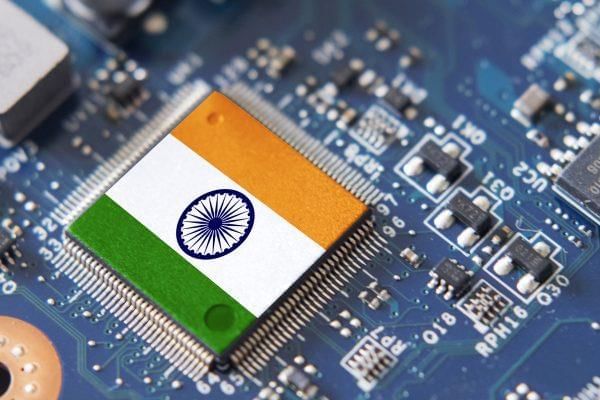 Why in News?
Why in News?
Semiconductors have become the backbone of the global digital economy, essential for a wide range of devices from smartphones to satellites. For India, enhancing semiconductor capabilities is crucial not only for industrial advancement but also for achieving economic, technological, and geopolitical independence. This drive is pivotal to spearheading the semiconductor revolution in India.
Key Takeaways
- Semiconductors are foundational to the digital economy, similar to the role of steel in the industrial age.
- India is witnessing a significant rise in demand for semiconductors due to its expanding electronics ecosystem.
- The Indian government has launched initiatives to establish semiconductor manufacturing plants and enhance global partnerships.
Additional Details
- Evolution of Semiconductors:
- Early Era: Computers operated on vacuum tubes, occupying entire rooms.
- Modern Era: Billions of transistors are now integrated into chips the size of fingernails, powering a variety of technologies including mobile devices and AI systems.
- Strategic Importance:
- National security hinges on semiconductor availability; without them, key sectors like communication and defence cannot function.
- Global chip shortages during the pandemic exposed vulnerabilities in supply chains.
- India’s Semiconductor Mission:
- The India Semiconductor Mission has approved the establishment of 10 semiconductor plants, with the first "Made in India" chip expected this year.
- Global companies are investing in India's semiconductor manufacturing sector, enhancing support for factories and supply chains.
- Talent and Innovation:
- India accounts for 20% of the global chip design workforce and is preparing to fill the anticipated shortage of semiconductor professionals.
- Start-ups are actively developing innovative technologies, such as IoT chips based on indigenous processors.
- Global Collaboration:
- Industry leaders like Lam Research and Applied Materials are committing substantial investments for R&D in India.
- Collaboration with academic institutions is fostering a robust talent pipeline for semiconductor manufacturing.
The semiconductor revolution in India signifies a transformative shift from being merely a consumer of digital technologies to becoming a global producer and innovator. With robust policy support, a focus on talent development, and strong international collaboration, India is poised to emerge as a resilient hub in the global semiconductor value chain, shaping the digital future for itself and beyond.
|
297 docs|147 tests
|





















